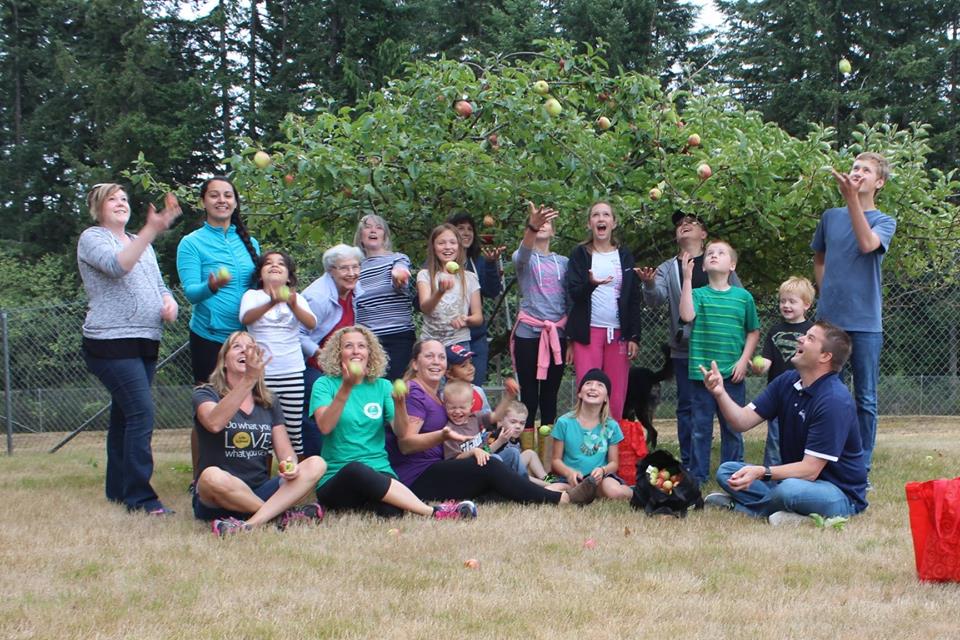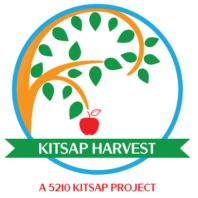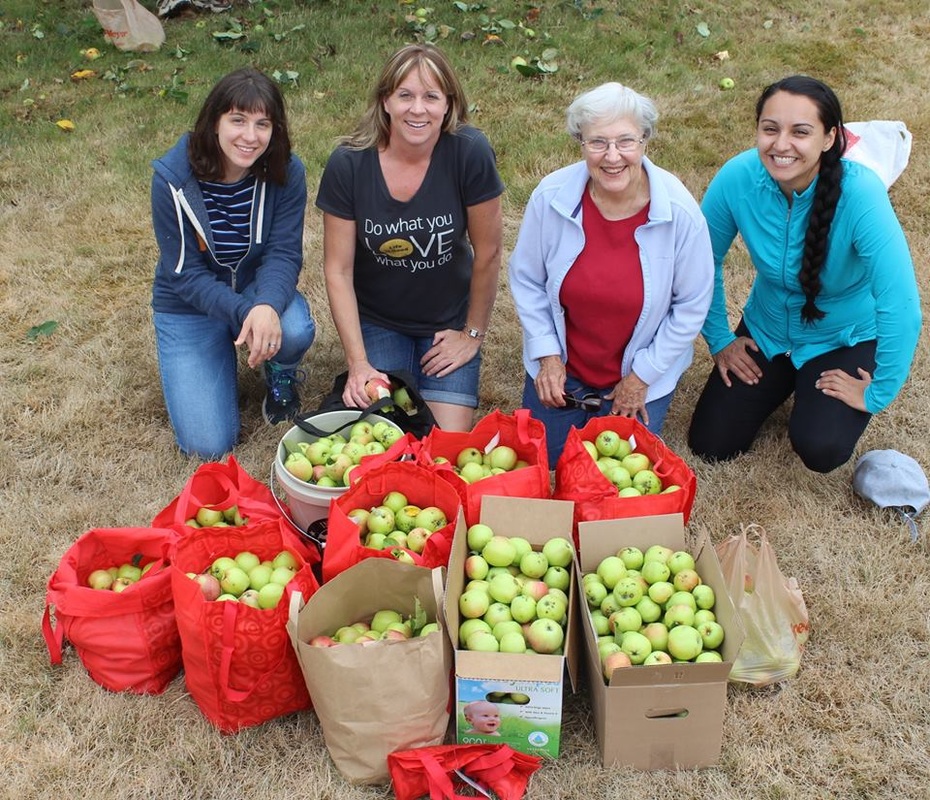Kitsap Harvest made its first engagement with possible glean sites at the Farmer’s Markets. We handed out our tri-fold brochure with a detachable door hanger or our door hangers. We asked people to share these in their neighborhoods, or anywhere they saw excess food such as gardens and fruit trees. It was fun to see someone return to our booth and state that they started seeing fruit trees all over since their conversation with us. This means that before they hadn’t thought to think about it, but with this new information, they have gained a lense in which they see the world around them differently.
Early, before the harvest season, we identified Expectations for successful gleans and what would need to happen to circumvent possible issues that could come up when gleaning from property owners and farmers. We found that some of our expectations were too rigid and added to inefficiency. This case was mostly around pre-checking properties. We found that if we did one big glean with multiple people, we could check the site to make sure it was worth everyone's’ time, but with smaller one or two tree sites, we didn’t have the volunteer capability to do those pre-site checks.
We decided to categorize our volunteers into two sets: vetted and not vetted.
Vetted meant that a volunteer had gone out on a group glean and learned about fruit condition, and how to properly pick it. This is a way to insure that we are teaching our volunteers how to be respectful to the owners property, and also to distinguish donatable food from non donatable food. They had completed a liability waiver and background disclosure through our partner organization, WSU Ext. In addition, anyone who used a ladder needed to complete an OSHA Ladder Training questionnaire. Our homeowners are protected by the Good Samaritan Act. Our volunteers were covered by WSU Ext. insurance that covers all volunteers who log their hours in the volunteer database. .
These volunteers were then put on a special list for individual gleans. An individual glean is when a property owner has one or two trees, or a small garden and the work is easily done with a couple of people. Having more than one person on site also became a standard operating procedure for safety reasons.
The second group of volunteers was anyone who had signed up to volunteer, even without a background disclosure and was invited to our larger group gleans. Group gleans also provided our volunteers the opportunity to connect with hard copies of the liability waiver and background disclosure which could be filled out on site so they could move into the “vetted” category.
After all the produce has been gleaned, we would then show our volunteers how it was weighed… this was usually a drumroll moment and people would hang out to learn the total pounds for donation. (Only food that would be distributed is weighted.) Our volunteers were welcome to take some home for themselves and come glean again if they wanted more.
As the season progressed, we created our Potential Glean Form. This is a digital form used by the public to register their property as a potential glean site. We asked about tools on site, pesticide use, what kind and how much produce, would they like any held to the side, and when does it need to be gleaned. This information is automatically exported to a google excel sheet where we added columns to document when it was gleaned, by who and for how long, how many pounds, and condition of the produce. Some of this information we found was better documented on our Harvest Form such as volunteers, and volunteer hours. A form was created for each glean so help dictate instructions for food drop off and contact emergency information, as well as background disclosure completed and ladder training. We provided this to our Glean leads during group gleans.

Apple Glean August 2017
Some of the benefits of attending our local Fruit Club meetings was the wealth of knowledge about so many varieties of fruit. Connecting with members who had time to volunteer at our group gleans and share their knowledge of how to pick fruit and identify fruit condition. They invited us to speak at their meetings, and share our information at their event booths.
Engaging the right audience comes down to identifying who is doing similar work. Reinventing the wheel won’t help the community nearly as much as strengthening an already established program or concentrating on clarifying what your area needs most.
Below are the key aspects of donor relations:
-
Put yourself out in the community and niche in with community events that have a holistic feel.
-
Word of mouth is best… that means the message is getting out in the community. Our Food banks helped share the message with donors.
-
Stay open and honest with the donors… We let them know that this was our first year with boots on the ground and we were working to build a volunteer base that can respond to every call, but right now we are still building momentum. At least we had their info and could reach out earlier next year to arrange the glean.
-
Win, win, win! Gleaning is a win for all. The person with too much food can relate to giving it to family and friends and the fruit keeps falling. We have the people power, and we can set some aside for them. Our volunteers take some home, and we donate the rest to people in need. We match the size of the glean to the number of volunteers.
-
Bad fruit is still good fruit. In some occasions, bad fruit is collected and given to pigs and chickens. Picking up bad fruit helps alleviate infestation the following year.
-
Keep your eyes open for local events and commit to introducing yourself and your mission to as many people as possible.
-
Think outside the box when connecting groups of people who might take an interest, such as homeschoolers, recovery houses, local clubs, and churches.
-
Keep your public information updated and accessible. Respond quickly, even if it’s to say that you are working on that answer. People will have more patience with you if you let them know that their concern or thought matters.
-
Anticipate a donor’s questions and concerns.
Lastly, always be appreciative that people thought of your program when they wanted to give. Offer information such as tree care with the Fruit Club, or advertising bad produce on Facebook for folks that will collect for their critters. Give credit where credit is due.


